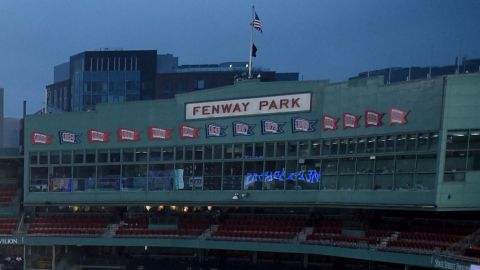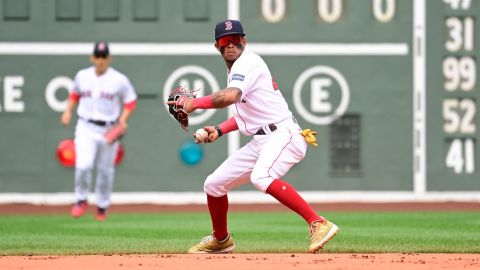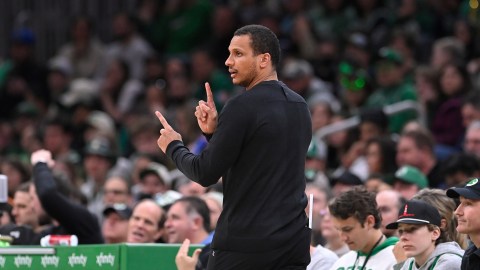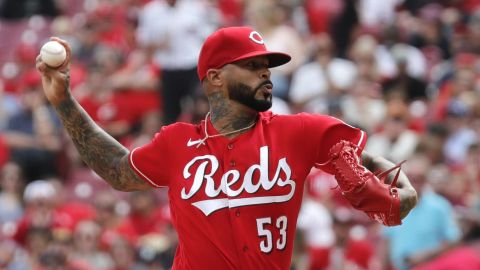Before we dig too deep into hypotheticals and comparing players and teams 20 years apart, let’s get a few things out of the way.
The Red Sox’s signing of David Price has the potential to be franchise-altering. Plenty of people expect the left-handed ace to be Boston’s savior, and after the guy signed the richest deal for a pitcher in baseball history, the expectations are, if not justified, understood.
Expecting Price to come in and be Pedro Martinez — literally one of the best pitchers in baseball history — probably is unfair. The purpose of this exercise, though, is rooted in looking at the potential impact Price can have on the team and the rotation in his first Red Sox season.
Now that we’ve covered that: Can David Price in his first season with the Red Sox have the same impact Pedro Martinez had in his first season in Boston?
The parallels are tough to ignore. The Red Sox acquired Martinez from the Montreal Expos in 1997, signing him to a record-breaking six-year, $75 million contract extension one month later to make him baseball’s highest-paid player at the time.
Martinez, like Price, was brought in to resurrect a pitching staff and quite frankly, a bad baseball team. The 1997 Red Sox finished six games under .500, just two games out of last place in the American League East. The pitching was a big reason why.
Here’s how Red Sox pitching looked in 1997:
— Finished 12th of 14 among American League teams in ERA and 10th in ERA+
— Only Oakland walked more batters and had a worse WHIP.
— Boston’s seven complete games were below the league average
— Only one starter — Tim Wakefield — logged more than 200 innings … by 1 1/3 inning.
Martinez was brought in to be the man who would help fix those obvious pitching issues.
Of course, he did just that in his first season. Fresh off a Cy Young Award win in his final season with Montreal, Martinez finished second in Cy Young voting after his first season in Boston, despite switching leagues. Martinez went 19-7 with a 2.89 ERA, striking out 251 batters in 233 innings pitched.
With a true horse at the top of the rotation, things fell into place behind No. 45. Boston improved its record by 14 games, finishing second in the AL East at 92-70.
The Red Sox were a near-lock to win every five days when Martinez took the ball. That alone can’t be overstated, but the impact acquiring a pitcher such as Martinez (or Price) can be felt more than once every five days. It alleviates the pressure on the rest of the staff and the bullpen. Surely, it was more than coincidence that the Red Sox went 15-4 on the days after Martinez was the winning pitcher in 1998 (not to mention nine of his wins came after Boston losses).
The Red Sox hope Price will have a similar effect in 2016. In case you needed a reminder, Boston’s pitching staff struggled last season.
How much? Here’s how much:
— Boston finished 14th out of 15 AL teams in ERA last season.
— The Red Sox issued the sixth-most walks and were below league average in strikeouts.
— Boston’s ERA+ was below the league average, and the pitching staff’s FIP was third-worst, as was its WHIP.
Unsurprisingly, the Red Sox finished last in the AL East.
Add all that up, and it’s easy to see how the club’s unwillingness to give big-money, long-term contracts to pitchers 30 and over dissipated in the form of seven years and a reported $217 million handed over to 30-year-old Price.
The Detroit Tigers and Toronto Blue Jays were 24-8 in Price’s 32 combined starts in 2015. He finished second in Cy Young voting. If the Red Sox have a similar fate in ’16 (and the projections paint an encouraging picture), it will be a huge upgrade atop the rotation.
Not only would the Red Sox add 20 to 25 wins, Price’s presence should benefit those who will take the ball behind him. There should be less pressure on pitchers such as Clay Buchholz and Rick Porcello this season. Like they did with Martinez, the Red Sox likely will feel the impact of having an ace like Price just as much on the days he’s not toeing the rubber.
One other huge aspect of both the 1998 and 2016 Red Sox teams is the bullpen. The ’98 club was stabilized by the shrewd move of making Tom Gordon the closer — 46 saves that season — after trading Heathcliff Slocumb to Seattle, a return that included Derek Lowe, who also was a key contributor to the Boston bullpen. The 2016 club bolstered its bullpen by trading for closer Craig Kimbrel and setup man Carson Smith. So there are parallels on the back end, too.
No one knows for sure what kind of impact Price will have on the Red Sox rotation this season or for the entirety of his seven-year deal. And while he probably won’t be the second coming of Martinez, similar expectations, especially early on, aren’t unfair.
Thumbnail photo via Kim Klement/USA TODAY Sports Images




